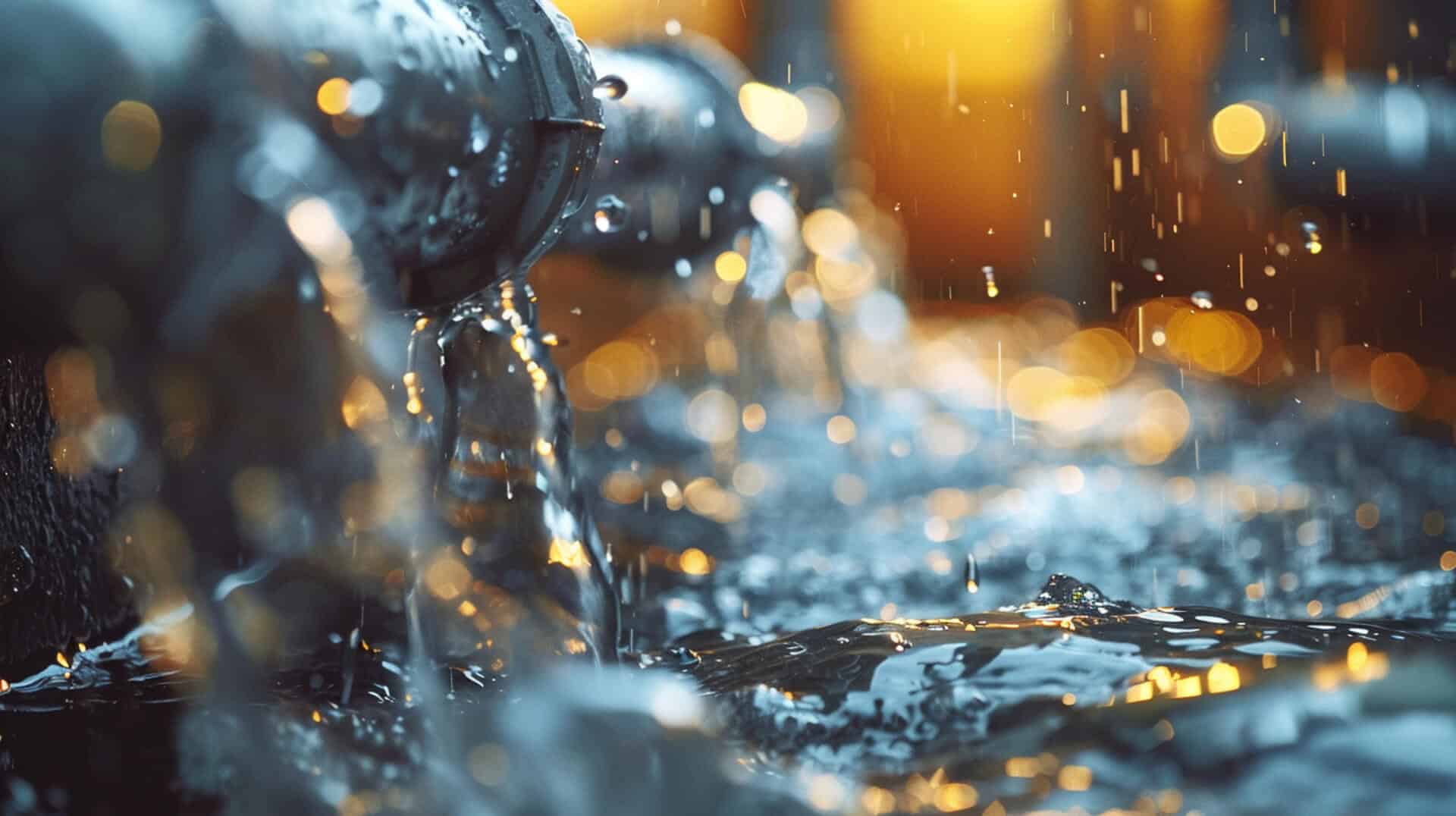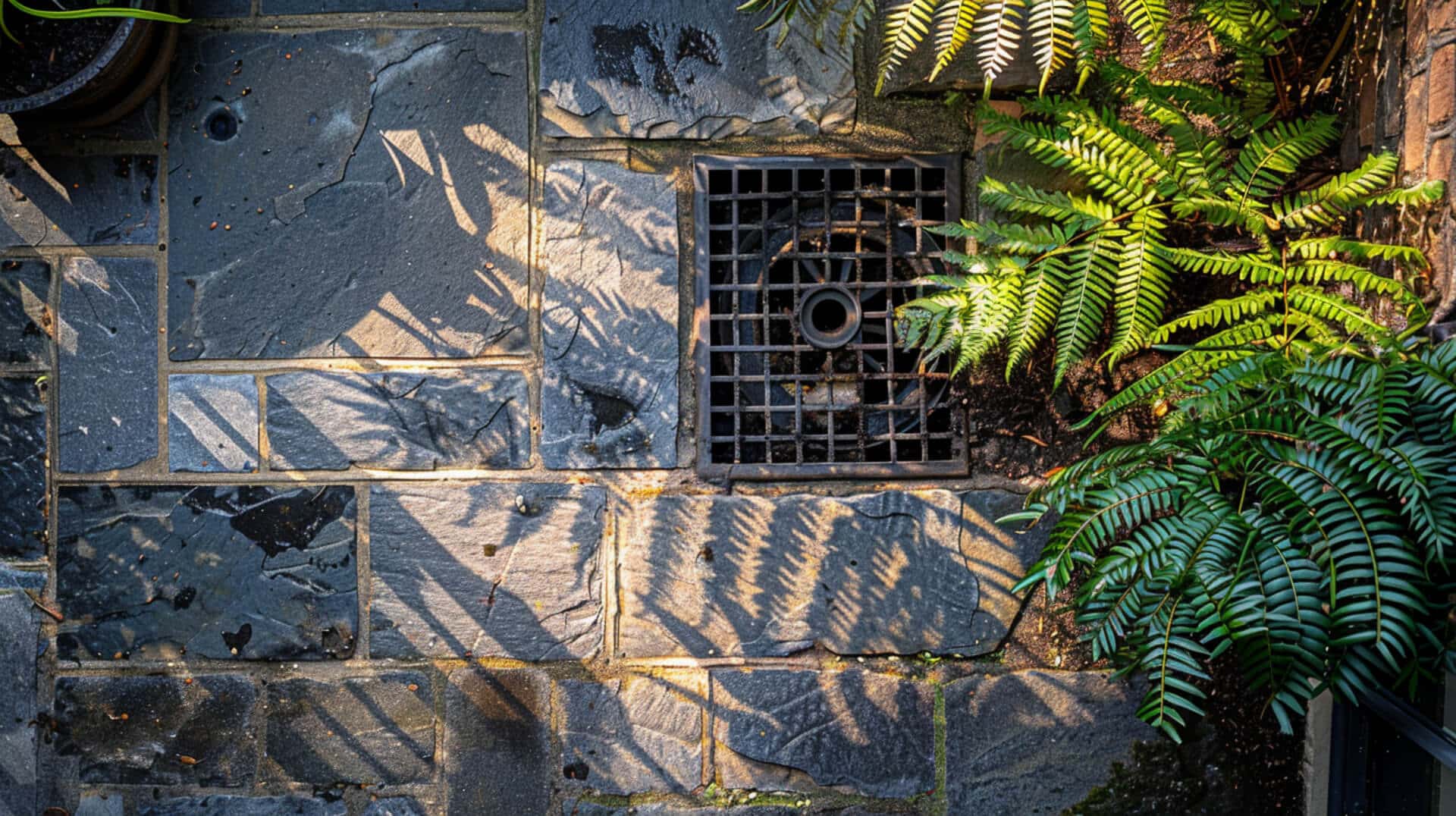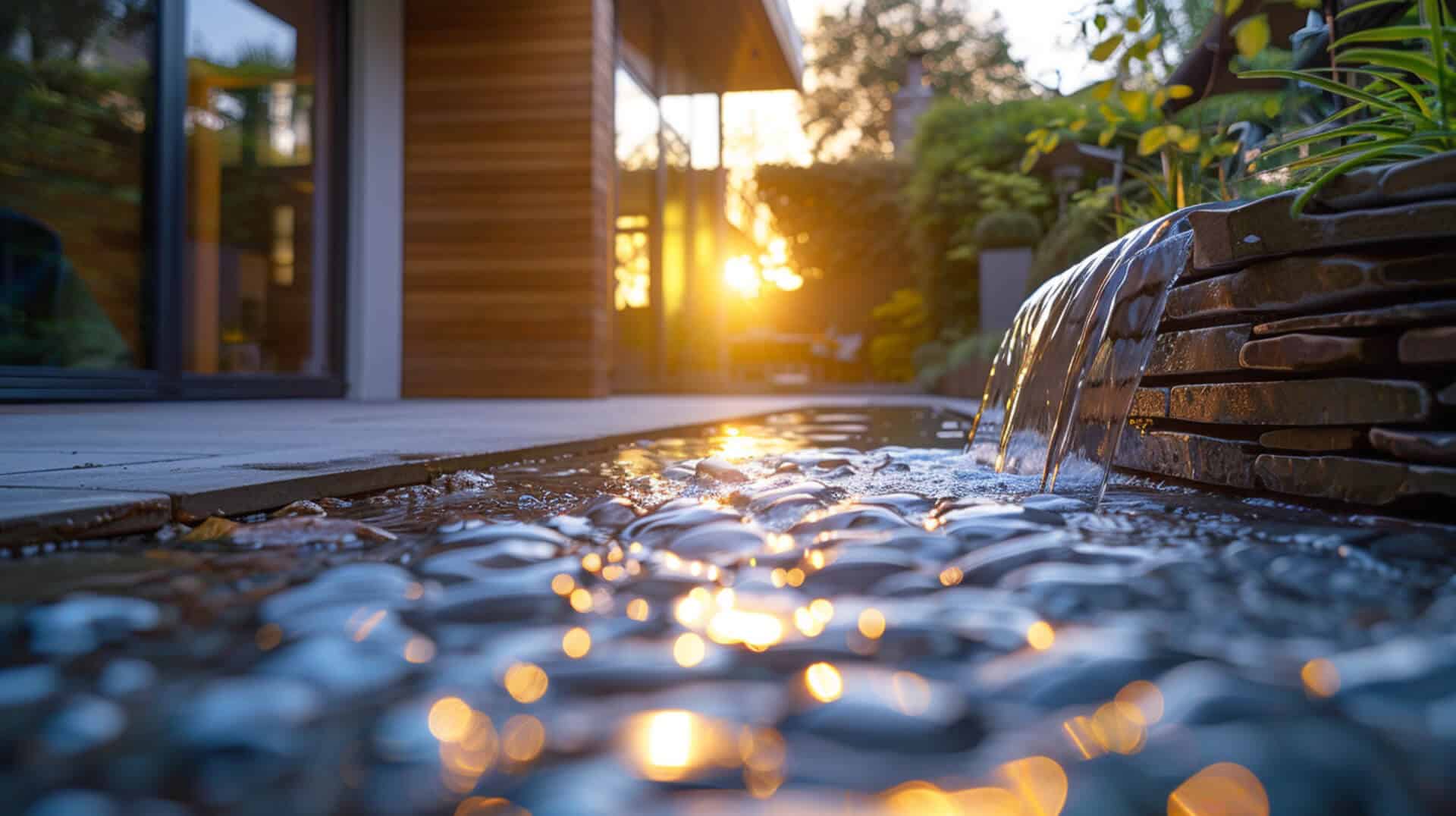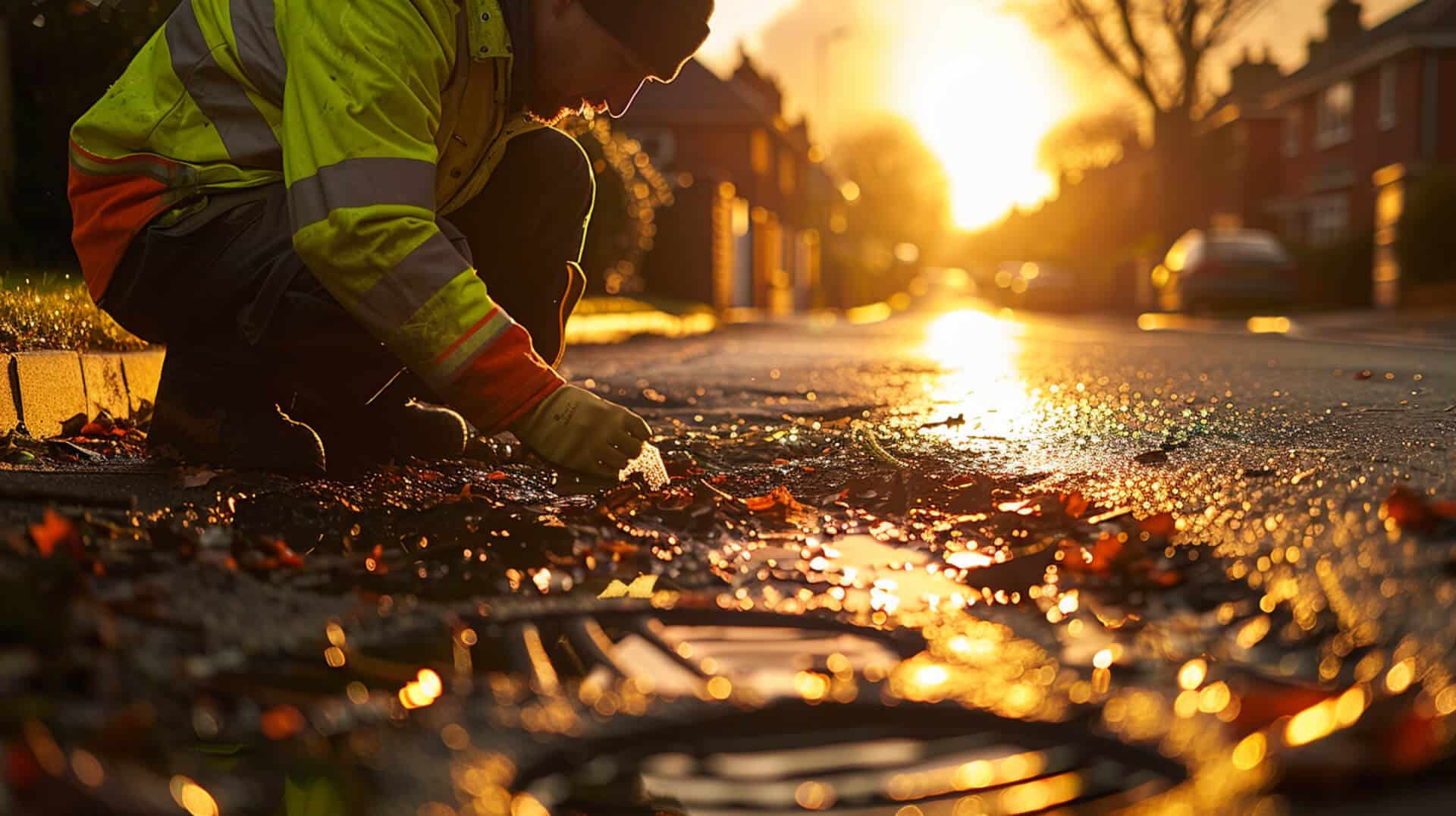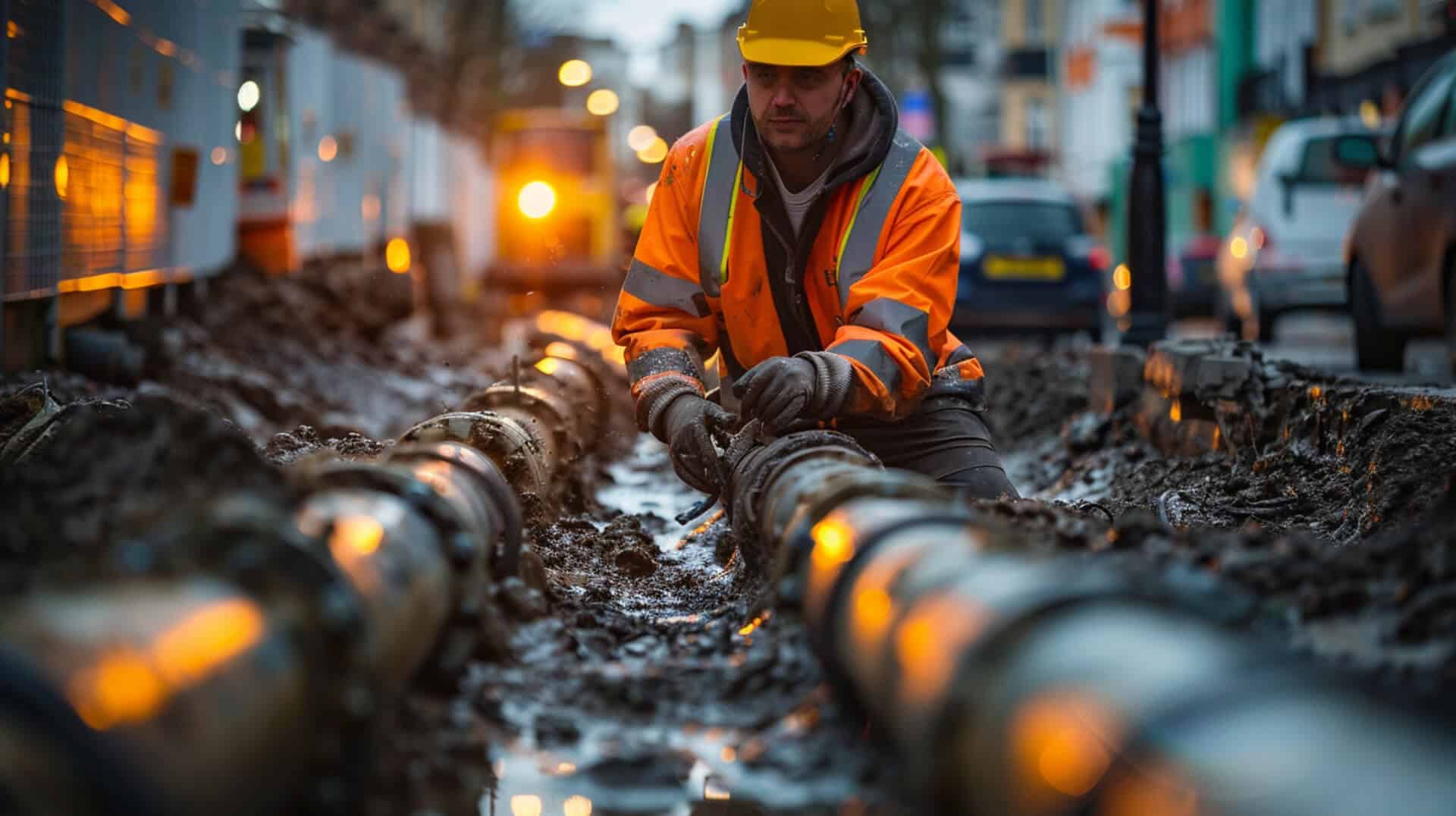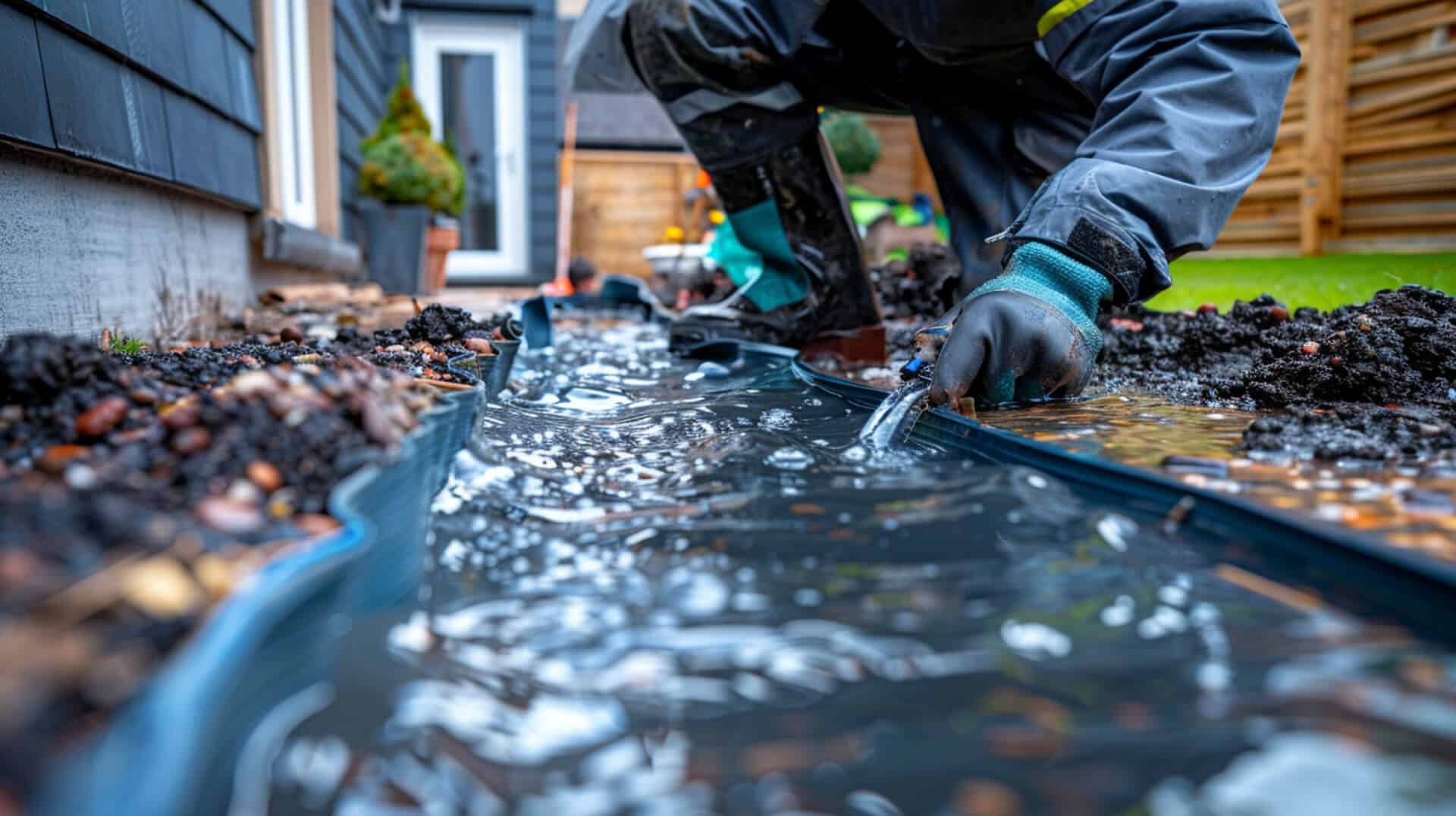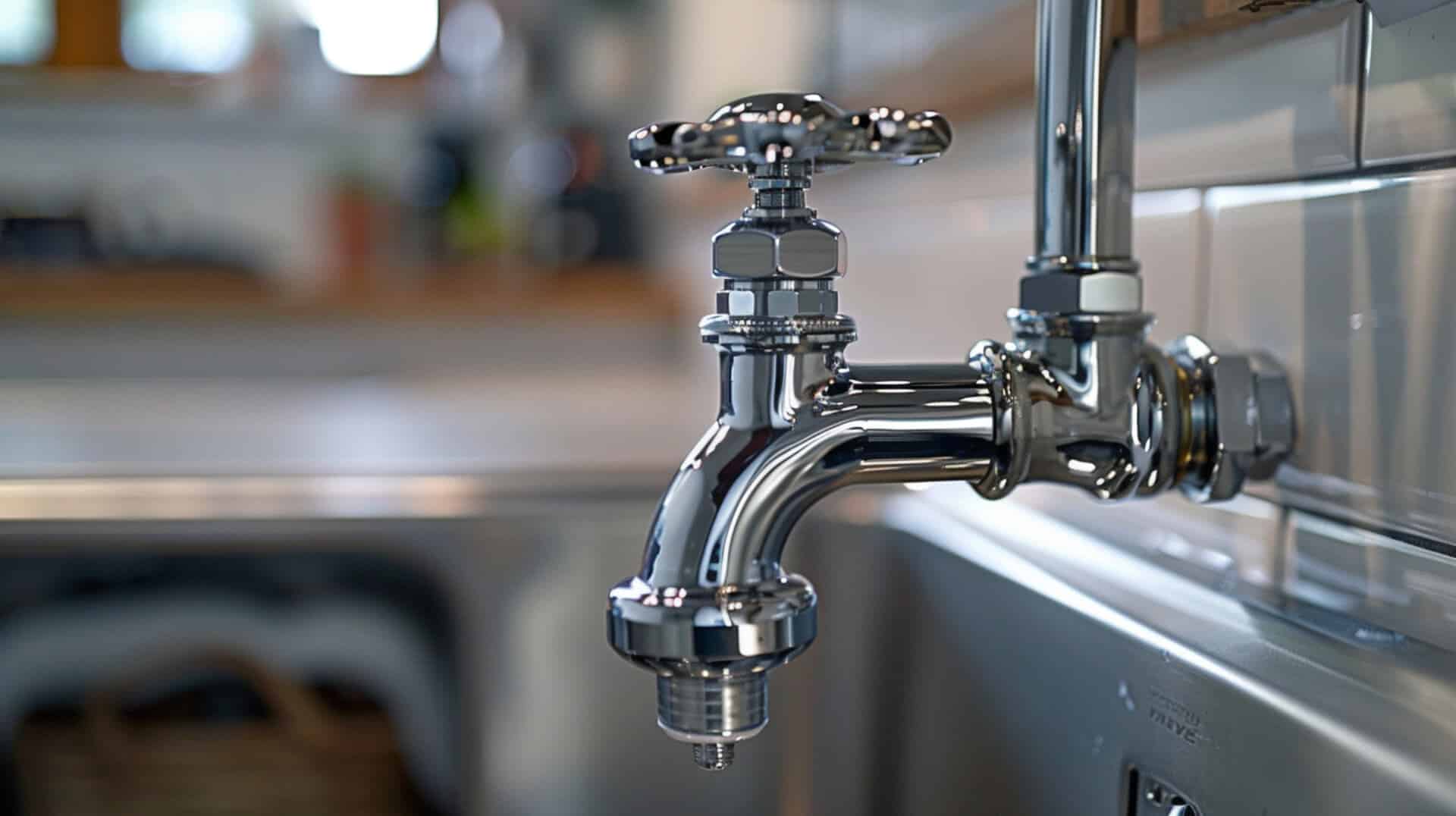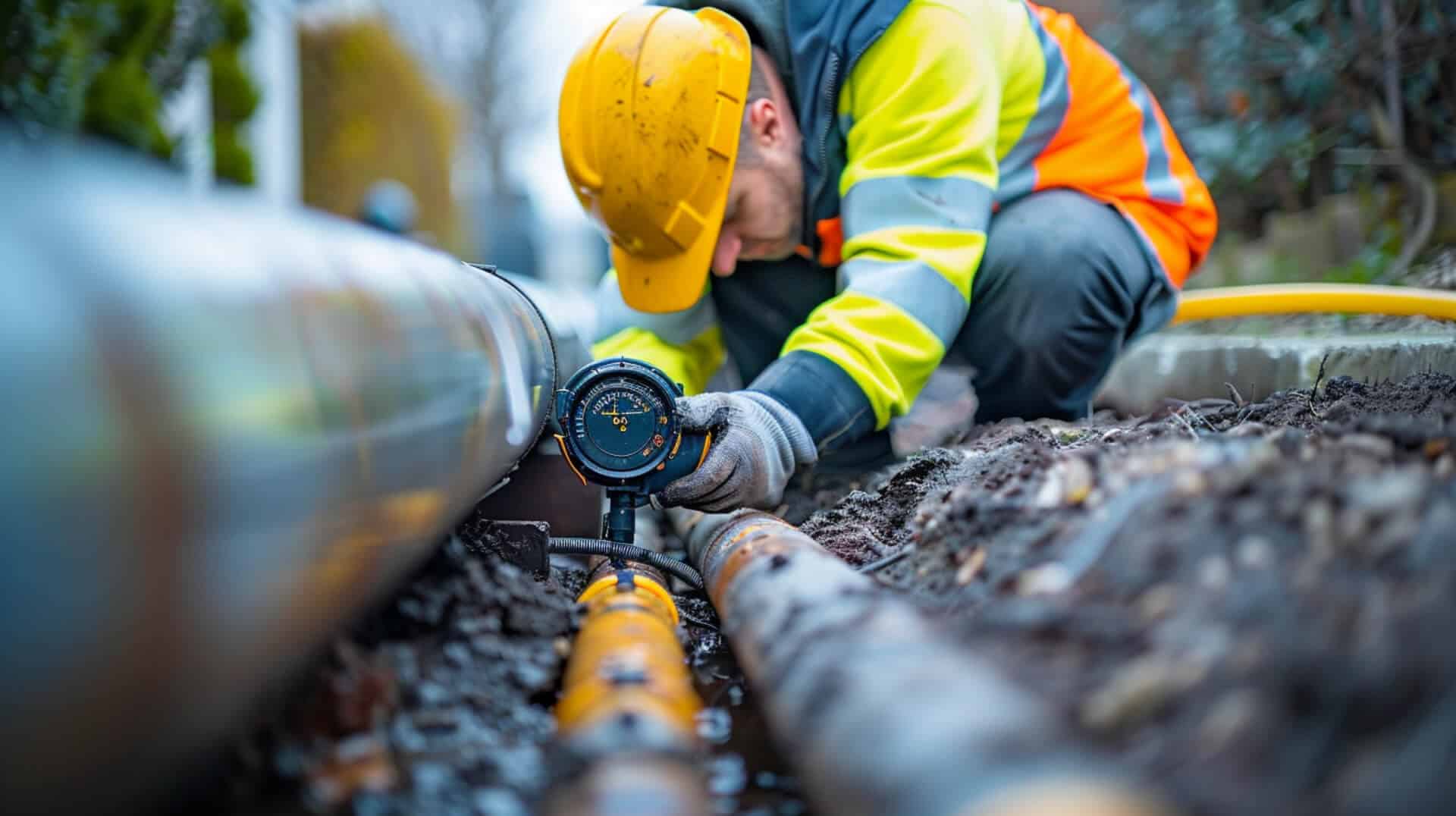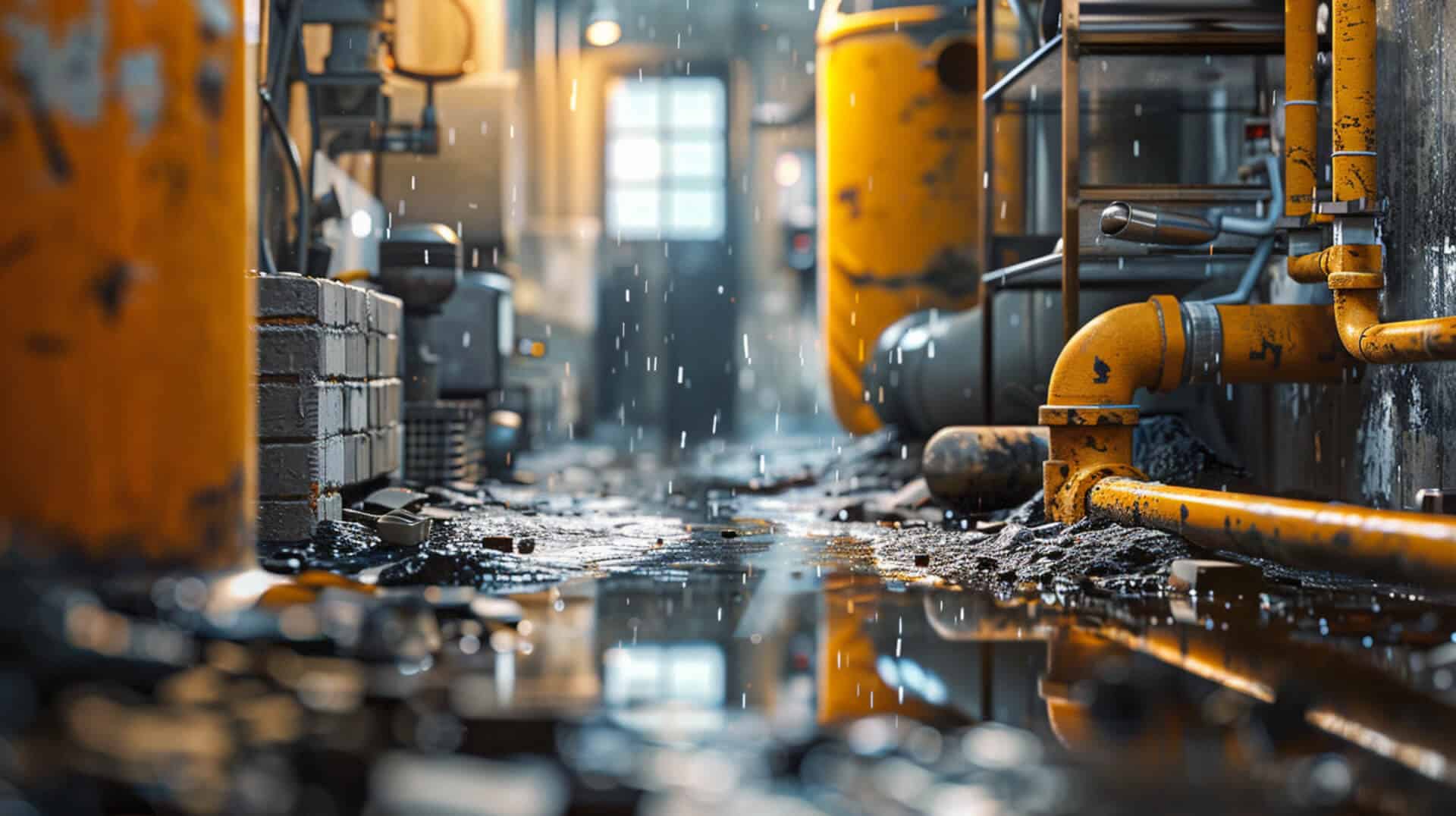 What Is Drainage Rerounding And Why Is It Important
What Is Drainage Rerounding And Why Is It Important
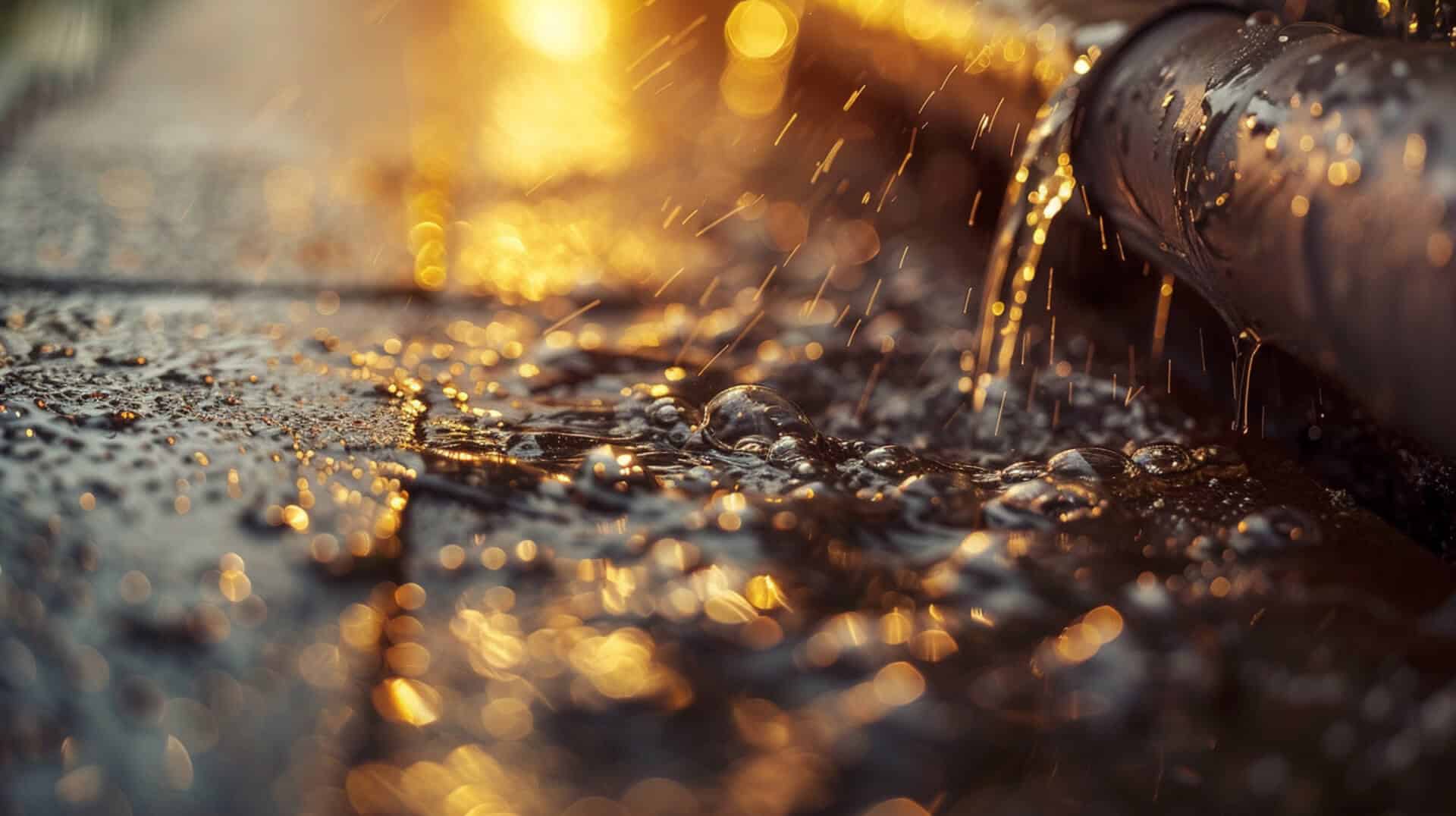
Drainage rerounding is a critical maintenance procedure designed to address the deformation of underground pipes. This process is particularly relevant for properties with pitch fibre drains installed between the 1940s and 1970s. These drains, composed of wood cellulose and coal tar, are prone to squashing and bubbling, leading to reduced flow and blockages. Rerounding restores these pipes to their original circular shape, enhancing the efficiency of the drainage system.
Historical Context of Drainage Systems
The development of rerounding techniques is a direct response to the common issues associated with ageing pitch fibre drains. Over time, these pipes can collapse under external pressure or suffer from internal delamination, necessitating a method to restore their functionality without complete replacement.
Preventative Measures for Longevity
Drainage rerounding serves as a preventative measure, ensuring the longevity of the drainage system. By correcting the shape of the pipes before severe degradation occurs, rerounding helps maintain an efficient waste management system, protecting the property’s foundation and controlling soil erosion.
The Process of Rerounding
The rerounding process involves the use of winched re-rounders and metal brushes, which are pulled through the deformed pipe to gradually restore its shape. This non-excavative method is a cost-effective alternative to traditional excavation, minimising disruption to the surrounding environment and reducing the risk of further damage to the pipe system.
The Significance of Drainage Rerounding for Property Integrity
Drainage rerounding plays a pivotal role in maintaining the structural health of properties. This process involves the restoration of deformed drainage pipes to their original circular shape, which is essential for the efficient management of wastewater and stormwater. When drainage systems are compromised due to pipe deformation, properties are at risk of water damage, which can undermine the integrity of foundations. Rerounding is a key preventative measure that mitigates such risks.
Preserving Property Foundations
Proper drainage is critical to protect the foundations of buildings. Water accumulation due to inadequate drainage can lead to foundation weakening and, ultimately, structural failure. Rerounding ensures that drainage pipes function correctly, directing water away from the foundation and maintaining the stability of the property.
Erosion Control and Soil Stability
Erosion around properties can be exacerbated by poor drainage, leading to soil instability and landscape degradation. Rerounding addresses this by reinstating the pipe’s capacity to handle water flow, thus controlling erosion and preserving soil structure.
Enhancing Waste Management Efficiency
The efficiency of waste management systems is heavily dependent on the condition of drainage pipes. Rerounding contributes to the overall functionality of these systems by preventing blockages and maintaining consistent flow, which is crucial for the effective removal of waste from the property.
By ensuring the proper function of drainage systems, rerounding serves as a vital procedure for safeguarding property integrity and preventing long-term damage.
Technical Overview: The Drainage Rerounding Process
Drainage rerounding is a specialised procedure employed to rectify the shape of deformed drainage pipes, restoring them to their original design specifications. This section provides an overview of the techniques and tools used in the rerounding process, the advantages of its non-excavative nature, its effectiveness in specific scenarios, and the preparatory steps required.
Techniques and Tools Utilised in Rerounding
The rerounding process typically involves the use of winched re-rounders and metal brushes. These tools are inserted into the deformed pipe and, as they are pulled through, they incrementally reform the pipe’s shape. This method is precise and controlled, ensuring that the pipe is returned to its optimal condition without causing further damage.
Advantages of Non-Excavative Rerounding
Unlike traditional excavation methods, rerounding does not require digging up the affected pipes, which offers several benefits:
– Minimised disruption to the surrounding environment and daily activities.
– Reduced risk of damage to nearby infrastructure.
– Lower overall costs due to the absence of excavation and restoration work.
Effectiveness of Rerounding
Rerounding is particularly effective in scenarios where pipes have experienced deformation due to external pressures or material degradation. It is a preferred method for pipes that are not yet severely damaged and can still be reshaped without the need for complete replacement.
Preparatory Steps for Rerounding
Before initiating the rerounding process, a thorough assessment of the pipe’s condition is necessary. This is typically done using CCTV surveys to identify the extent and location of the deformation. Once the need for rerounding is confirmed, the area around the pipe is prepared to ensure that the equipment can be inserted and operated without obstructions.
Complementary Techniques: Structural Lining and Its Role
Following the process of drainage rerounding, structural lining often serves as a complementary technique to further reinforce and protect the drainage system. This section explores the symbiotic relationship between rerounding and structural lining, the materials and methods involved in the cured-in-place pipe (CIPP) technique, and the reasons why structural lining is a critical component for enhancing the longevity of drainage systems.
Integration of Structural Lining with Rerounding
Structural lining is typically performed after rerounding to consolidate the pipe’s restored shape and provide an additional layer of protection. This process involves inserting a resin-based liner into the rerounded pipe, which then hardens to form a ‘pipe within a pipe’, effectively sealing any remaining cracks or weak spots.
Cured-in-Place Pipe (CIPP) Technique
The CIPP technique is a trenchless rehabilitation method that involves:
– Inserting a resin-saturated felt tube into the pipe.
– Inflating the tube to fit snugly against the pipe walls.
– Curing the resin with heat or ultraviolet light to harden the material.
Essential Benefits of Structural Lining
Structural lining is essential for extending the lifespan of drainage systems due to its ability to:
– Create a seamless and corrosion-resistant inner surface.
– Enhance the structural integrity of the pipe.
– Reduce the likelihood of future blockages and leaks.
Prevention of Root Ingress and Leakage
By forming a tight seal against the pipe walls, structural lining significantly reduces the risk of root ingress and water leakage, which are common issues in older or damaged drainage systems. This preventative measure is crucial for maintaining the functionality and reliability of the drainage infrastructure.
Diagnosing Drainage Issues: The Importance of CCTV Surveys
CCTV surveys are an indispensable tool in the initial assessment of drainage conditions. These surveys provide a visual inspection of the interior of drainage pipes, using camera technology to identify the state of the pipe and any issues that may be present.
Guiding the Rerounding Decision-Making Process
The information gathered from CCTV surveys is critical in determining whether rerounding is necessary. By revealing the extent of pipe deformation or damage, these surveys allow for informed decisions on the most appropriate course of action.
Uncovering Types of Damage and Blockages
CCTV surveys can detect various types of damage, including:
– Pipe deformation such as squashing or bubbling.
– Cracks or fractures within the pipe walls.
– Blockages caused by accumulated debris, tree roots, or other obstructions.
Enhancing Rerounding Effectiveness
The detailed insights provided by CCTV surveys enable the precise targeting of rerounding efforts, ensuring that the process is conducted efficiently and effectively. By understanding the specific issues within the pipe, rerounding can be tailored to address the unique challenges of each situation, enhancing the overall health and longevity of the drainage system.
Environmental Considerations in Drainage Rerounding
Drainage rerounding offers significant environmental benefits due to its non-excavative approach. This trenchless technology is instrumental in preserving the integrity of surrounding ecosystems while maintaining the functionality of drainage systems.
Preserving Ecosystems Through Non-Excavative Techniques
The rerounding process avoids the need for extensive digging, which can disrupt habitats and local flora. By eliminating excavation, rerounding minimises the impact on the environment, maintaining the natural landscape and preventing the displacement of wildlife.
Importance of Minimising Soil Disruption
In both urban and rural settings, maintaining soil structure is crucial for preventing erosion and sustaining plant life. Rerounding’s non-invasive nature ensures that the soil’s composition and stability are preserved, which is vital for the health of the environment and the prevention of further drainage issues.
Reducing Carbon Footprint with Trenchless Technology
Trenchless rerounding techniques contribute to a lower carbon footprint in drainage maintenance. By circumventing the need for heavy machinery typically used in excavation, rerounding reduces greenhouse gas emissions associated with such equipment. This approach aligns with sustainable practices and supports efforts to combat climate change.
Cost-Effectiveness and Long-Term Benefits of Rerounding
When considering the maintenance of drainage systems, rerounding emerges as a cost-effective alternative to traditional pipe replacement. This section examines the financial implications of rerounding and its long-term benefits for property owners.
Comparing Costs: Rerounding vs. Pipe Replacement
Rerounding is often more economical than replacing pipes, primarily because it circumvents the need for excavation. The costs associated with digging, pipe removal, and landscape restoration are significant, and rerounding avoids these expenses. Additionally, rerounding can be executed more quickly, reducing labour costs.
Financial Savings from Rerounding
Property owners can expect substantial long-term savings from rerounding due to its preventative nature. By addressing issues before they necessitate complete pipe replacement, rerounding extends the life of existing drainage systems, deferring the substantial costs of new installations.
Sustainability of Rerounding
Rerounding is not only a financially prudent choice but also a sustainable one. It reduces the need for new materials and minimises waste, aligning with eco-friendly practices and contributing to the longevity of property infrastructure.
Impact on Future Maintenance
The durability and reliability of rerounded systems mean that future maintenance needs are less frequent and less intensive. This reliability translates into further cost savings and peace of mind for property owners, knowing that their drainage systems are less likely to fail unexpectedly.
Maintenance and Inspection: Ensuring Continued Efficiency
After the completion of drainage rerounding, maintaining the renewed system is essential for ensuring its long-term efficiency and functionality. Regular maintenance and inspection are key components of this post-rerounding care.
Recommended Post-Rerounding Maintenance
To prolong the efficiency of rerounded drainage systems, routine maintenance is advised. This includes:
- Regular cleaning to prevent the build-up of debris and sediment.
- Monitoring for any signs of wear or damage, particularly after extreme weather conditions.
- Implementing preventative measures such as gutter maintenance and downspout extensions to manage water flow effectively.
Inspection Frequency for Rerounded Systems
Rerounded drainage systems should be inspected at least annually to ensure they remain in optimal condition. More frequent inspections may be necessary in areas prone to heavy rainfall or for older systems that may be more susceptible to damage.
Indicators for Further Interventions
Property managers should be vigilant for signs that may indicate the need for follow-up rerounding or lining interventions, such as:
- Persistent slow drainage, which could suggest a partial blockage or shape regression.
- Visible ground subsidence near the pipe path, which may signal underlying issues.
- Unusual sounds emanating from the drainage system, often indicative of obstruction or damage.
The Importance of Proactive Drainage Maintenance
A proactive approach to drainage maintenance is crucial. It allows for the early detection of potential issues, which can be addressed before they escalate into more serious problems. This proactive stance not only preserves the integrity of the drainage system but also mitigates the risk of costly and disruptive repairs in the future.
Initiating a Drainage Rerounding Project
When drainage issues arise, property owners may consider rerounding as a solution. Here are the steps and considerations for starting a drainage rerounding project.
Selecting a Qualified Contractor
Choosing the right contractor is crucial for a successful rerounding project. You should:
- Look for contractors with specific experience in drainage rerounding and structural lining.
- Check for certifications and memberships in relevant industry associations.
- Read reviews and ask for references to assess the contractor’s track record.
Legal and Regulatory Compliance
Before commencing rerounding work, it’s important to understand the legal and regulatory framework:
- Obtain necessary permissions from local water authorities or other regulatory bodies.
- Ensure the contractor is aware of and complies with all relevant safety and environmental regulations.
Preparing the Site for Rerounding
To facilitate the rerounding process, property owners can prepare their sites by:
- Clearing the area around the affected pipes to provide easy access for the contractor.
- Identifying and marking any underground utilities to avoid accidental damage.
- Discussing with the contractor any temporary disruptions to property use that may occur during the rerounding process.
Addressing Common Challenges in Drainage Rerounding
Drainage rerounding, while effective, can present certain challenges that require professional attention and strategic planning to ensure the process is completed successfully.
Overcoming Obstacles in Rerounding
Professionals may encounter various obstacles during rerounding, such as:
- Access to Pipes: In urban areas or landscaped properties, gaining access to underground pipes can be difficult. Contractors often use specialised equipment to navigate these challenges.
- Severe Pipe Degradation: Pipes that are extremely deformed or deteriorated may not be suitable for rerounding. In such cases, professionals must assess whether partial replacement or additional support methods are necessary.
Mitigating Impact on Daily Operations
To minimise the impact of rerounding on your daily operations, contractors may:
- Schedule work during off-peak hours or when the property is less active.
- Use trenchless techniques to reduce surface disruption and allow for continued use of the area.
Technical Difficulties and Solutions
Technical difficulties, such as unexpected pipe material reactions or equipment malfunctions, are addressed by:
- Employing experienced technicians who can adapt to on-site challenges.
- Having contingency plans in place, including backup equipment and alternative techniques.
Professionals in the field of drainage rerounding are equipped with the knowledge and tools to navigate these challenges, ensuring that the process is carried out with minimal disruption and maximum efficiency.
Innovations in Drainage Rerounding Techniques
The field of drainage maintenance has seen significant technological advancements that have improved the rerounding process. These innovations enhance the efficiency and effectiveness of restoring deformed drainage pipes to their original shape.
Technological Advancements in Rerounding
Recent developments in rerounding technology include:
- Enhanced CCTV Capabilities: Modern CCTV equipment provides high-resolution images and 3D mapping, allowing for more accurate assessments of pipe conditions.
- Precision Tools: The introduction of more precise rerounding tools that can adapt to various pipe sizes and materials, ensuring a more effective restoration process.
Enhancements in Structural Lining Materials
Advancements in materials used for structural lining post-rerounding include:
- Eco-Friendly Resins: New resin formulas that cure faster and have a reduced environmental impact.
- Durable Liners: The development of liners with greater resistance to chemical and physical stresses, prolonging the life of the rehabilitated pipes.
Emerging Trends in Drainage Maintenance
The industry is witnessing trends that point towards:
- Smart Monitoring Systems: The integration of sensors and IoT technology for real-time monitoring of drainage systems.
- Robotics: The use of robotic systems for performing rerounding and lining with minimal human intervention.
Adapting to Complex Drainage Challenges
As drainage systems become more complex, the industry is adapting by:
- Custom Solutions: Tailoring rerounding techniques to address the unique challenges of different pipe materials and configurations.
- Training and Education: Investing in the training of professionals to handle advanced equipment and new materials effectively.
These advancements and trends indicate a forward-moving industry that is continually improving its methods to ensure the longevity and reliability of drainage systems.
The Integral Role of Drainage Rerounding in Modern Infrastructure
Drainage rerounding is not just a maintenance technique; it is a strategic approach essential for the sustainable management of modern infrastructure. Its role extends beyond immediate repairs, influencing long-term property management practices.
Embracing Rerounding for Sustainable Infrastructure Maintenance
The adoption of drainage rerounding is crucial for the future of infrastructure maintenance. It offers a less invasive, more cost-effective solution compared to traditional pipe replacement methods. By embracing rerounding, you contribute to the preservation of the environment and the extension of the lifespan of your drainage systems.
Collective Understanding and Sustainable Property Management
A collective understanding of the benefits of rerounding can lead to more sustainable property management practices. Recognising the importance of regular maintenance and the potential for significant cost savings encourages a proactive approach to infrastructure care.
Advocacy and Implementation by Stakeholders
Property owners, business owners, and facility managers play a pivotal role in advocating for and implementing rerounding solutions. Their investment in this technology not only protects their assets but also sets a standard for responsible property management.
Education and Awareness for Wider Adoption
Ongoing education and awareness efforts are key to improving the adoption of drainage rerounding. Informing stakeholders about the advantages and advancements in rerounding technology can lead to wider acceptance and utilisation of this essential maintenance procedure.
